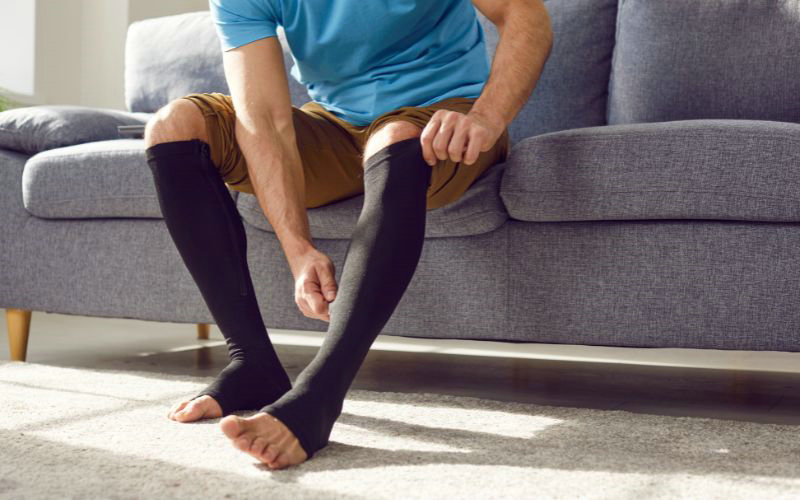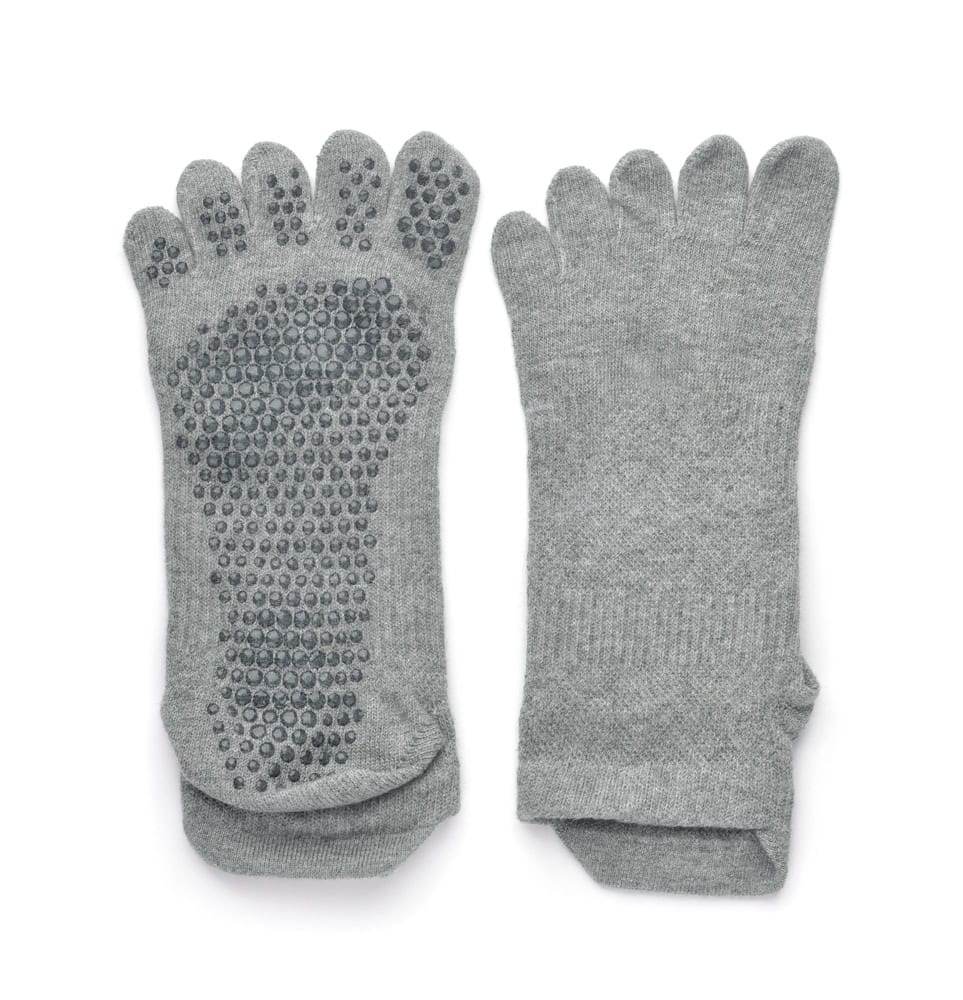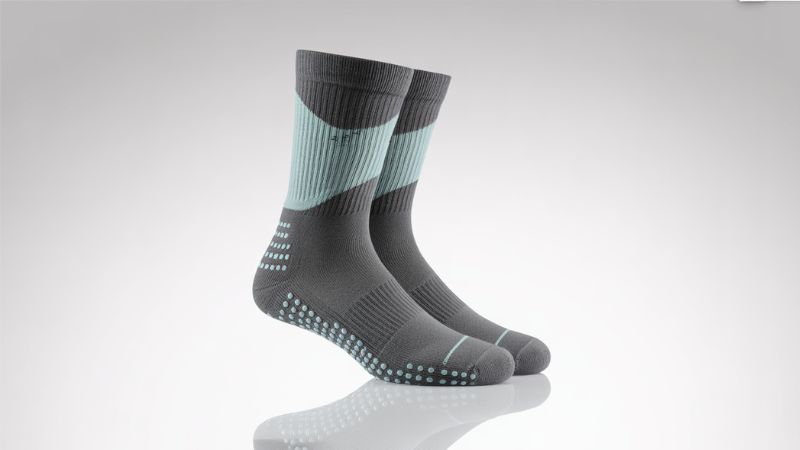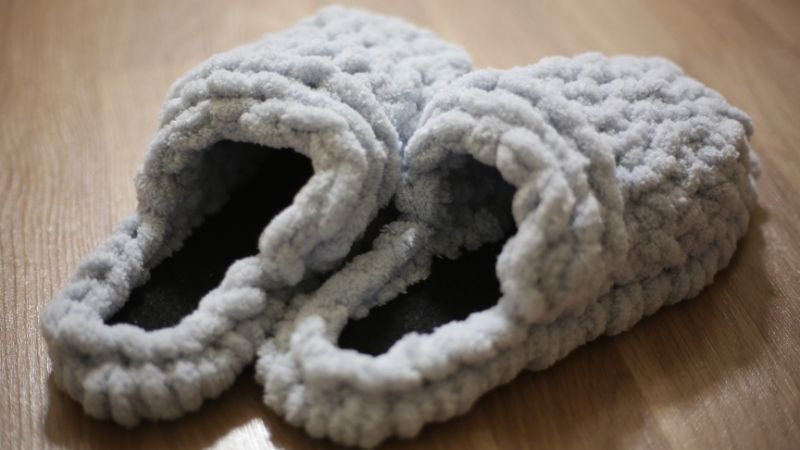
Compression Levels and Measurements
The tightness of compression socks is measured in millimeters of mercury (mmHg) and ranges from low to high levels. To list the standard measurements:
- Mild Compression: 8-15 mmHg
- Moderate Compression: 15-20 mmHg
- Firm Compression: 20-30 mmHg
- Extra Firm Compression: 30-40 mmHg
- Medical Grade: 40-50 mmHg or higher
Mild compression is suitable for everyday wear to relieve tired and slightly swollen legs. For more serious swelling and leg fatigue, a moderate level is often recommended. The firm and extra firm categories are typically used for more serious leg health issues, prescribed by a healthcare provider. Medical-grade compression requires a prescription and is used for severe vascular conditions. It’s essential that you consult with a healthcare professional to determine the appropriate level of compression for your particular situation.
Different Compression Levels for Different Uses
| Compression Level | Pressure Range (mmHg) | Uses |
|---|---|---|
| Mild Compression | 8-15 mmHg | – Provides relief for mildly aching and tired legs – Offers support and comfort for those who stand/sit for long periods – Provides a little extra support for general health and energy |
| Moderate Compression | 15-20 mmHg | – Provides slightly more support than mild compression – Offers day-to-day relief from achy, heavy, and slightly swollen legs – Can help enhance circulation, especially in the legs – Can help prevent varicose and spider veins during pregnancy |
| Firm Compression | 20-30 mmHg | – The most commonly prescribed compression level by doctors – Used to help treat a variety of minor to moderate medical conditions like varicose veins, edema, and orthostatic hypotension – Helps relieve chronically painful, heavily fatigued legs |
| Extra Firm Compression | 30-40 mmHg | – Provides relief from moderate to severe edema and lymphedema – Helps prevent and relieve more serious cases of varicose veins – Used in the treatment of deep vein thrombosis and post-thrombotic syndrome – Can help heal active venous stasis ulcers |
| Medical Grade | 40-50 mmHg or higher | – Used as part of the treatment for chronic venous insufficiency – Used for the most severe cases of deep vein thrombosis and post-thrombotic syndrome – Used in treating severe skin changes with active ulceration |
Signs You Need Larger Compression Socks

Signs that you may need larger compression socks include:
- Discomfort: If wearing the socks causes discomfort, they may be too small.
- Red Marks: Visible red marks on the top of your leg where the band rests indicate that the socks are too tight.
- Swollen Legs: If your legs remain swollen despite wearing compression socks, it could be a sign that the socks are too tight and not fitting properly.
- Pain: Compression socks should not be painful to wear. If they hurt, they might be too small or the compression level might be too high.
- Sliding Down: If the socks slide down your legs, they might be too large, but if they are too tight, they could also slide down due to improper fit.
- Bunching Up: Socks that bunch up when worn could be too long, indicating a need for a shorter size.
- Difficulty Putting Them On: If you can’t put the socks on or they are extremely difficult to put on, they may be too small.
- Indentations: While light indentations from the socks’ patterns are normal, if they are painful or do not resolve within 15 minutes, the socks may be too tight.
What do you do when compression socks leave marks on your skin?
If compression socks are leaving marks on your skin, here are some steps you can take:
1. Check for Skin Infection: Ensure that the marks are not due to a skin infection, which can cause redness, pain, heat, and swelling.
2. Moisturize: Apply a light moisturizing cream before putting on the socks to help with skin redness or whiteness.
3. Stay Hydrated: Proper hydration can help reduce swelling and the intensity of the marks left by the socks.
4. Re-evaluate Sock Size: If marks persist after a week of regular wear, consider taking new measurements of your legs to ensure you have the correct size.
5. Adjust Sock Length: Make sure your socks aren’t bunching up behind your knees, which may require a shorter or longer sock.
6. Consider Open-Toed Socks: If you have pain in your feet, switching to open-toed socks might help.
7. Use a Donning Device: If you have difficulty putting on compression socks, a SIMON donning device or similar tool can assist.
8. Consult a Doctor: If you have concerns about swelling or the marks are accompanied by other symptoms, seek medical advice.
9. Avoid Tight Clothing: Wearing tight socks, shoes, or clothes can exacerbate the issue, so opt for looser-fitting items.
10. Elevate Your Legs: Lying down or sleeping with your feet raised on a pillow can help reduce swelling.
11. Exercise: Engaging in gentle exercise can improve circulation and reduce swelling.
12. Compression Levels: Ensure you’re using the correct compression level as prescribed by your doctor, and if necessary, consult with them to adjust it.
Choosing the right compression sock involves a balance between a snug fit that promotes circulation and a too-tight fit that hinders it. Pay attention to these specific signs to ensure your comfort and the therapeutic effectiveness of the socks.
Correct Fit and Sizing

To find the right size of compression socks, follow these steps:
1. Measure Early in the Day: Swelling can increase throughout the day, so take your measurements in the morning for the most accurate sizing.
2. Measure Against Bare Skin: Ensure accurate measurements by measuring directly against your skin, not over clothing.
3. Ankle Circumference: Measure the narrowest part of your ankle, just above the ankle bone. This measurement is crucial for medical-grade compression socks.
4. Calf Circumference: Measure the widest part of your calf. This measurement helps determine the size of knee-high compression socks.
5. Thigh Circumference: If you’re choosing thigh-high stockings, measure the widest part of your thigh. This measurement is important for ensuring the stockings fit comfortably without rolling down.
6. Length Measurements: For knee-high socks, measure from the floor to the bend behind your knee.
For thigh-high stockings, measure from the floor up to the gluteal fold (just below your hips).
7. Consult Sizing Charts: Use the measurements you’ve taken to consult the sizing charts provided by the compression sock manufacturer. Each brand may have slightly different sizing, so it’s important to check the specific chart for the brand you’re considering.
8. Consider Shoe Size and Height: Some brands also factor in shoe size and height, especially for men’s compression socks and sports models.
9. Adjust for Comfort: If you’re between sizes or if your measurements fall at the high end of one size, consider how you prefer your socks to fit. Some may prefer a snugger fit, while others might opt for a bit more room.
Sinoknit, Why Us?
Ningbo Sinoknit Co., Ltd. is a leading wholesale custom sock manufacturer located in Zhuji, China. Our headquarters is in Ningbo, one of China’s major ports. Since 2004, we’ve been specializing in producing various types of high-quality socks using cutting-edge materials such as 100% cotton, combed cotton, mercerized cotton, chemical fiber blended yarn, and lycra.
Our socks factory is equipped with over 300 computerized sock knitting machines imported from Italy and Korea. This allows us to produce up to 20 million pairs of socks per year. With an extensive range of over 100 sock varieties, we offer 96-needle, 108-needle, 120-needle, 132-needle, 144-needle, 168-needle, and 200-needle slim socks, terry socks, cotton-yarn socks, and woolen pants.
Our products are exported to more than 20 countries and regions, including Korea, Japan, Southeast Asia, the Middle East, Europe, and North America. Trust us to provide you with the best wholesale socks for your needs.



